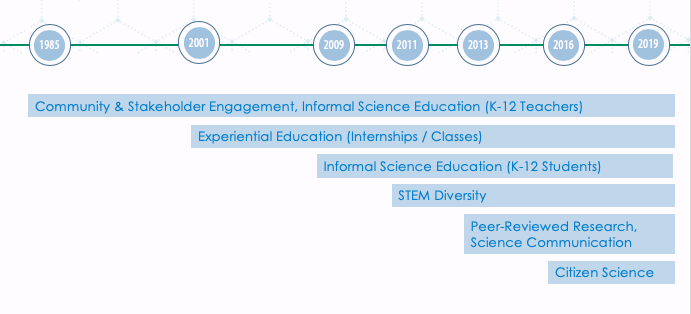Bringing environmental science to the people, IE launches Center for Public Engagement with Science
April 7, 2019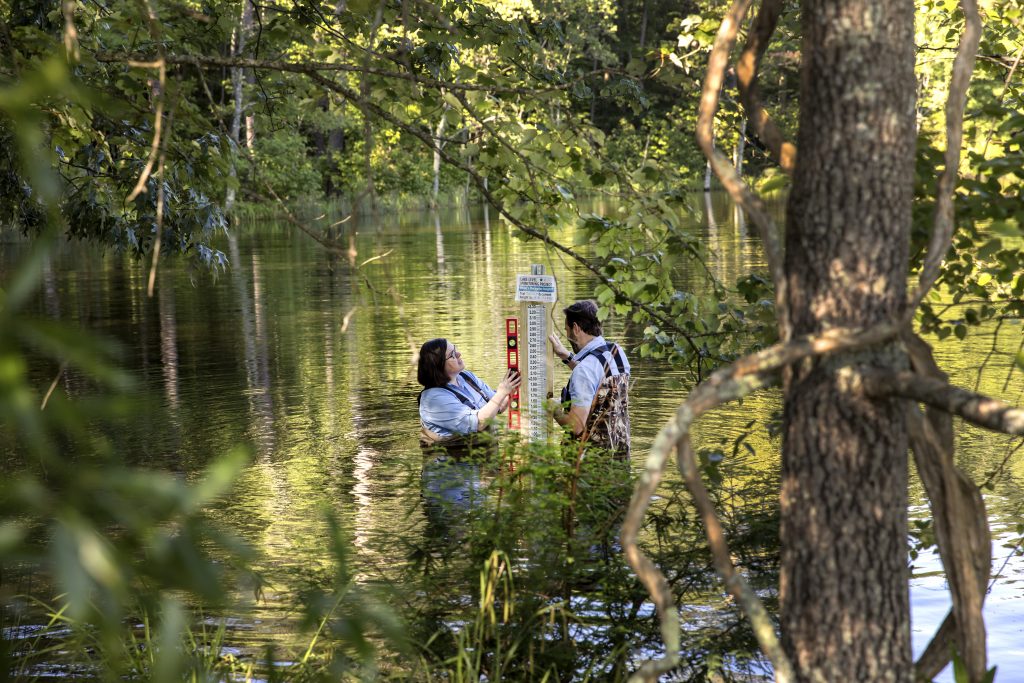
Sarah Yelton, left, environmental education coordinator for the UNC Institute for the Environment, and Tamlin Pavelsky, associate professor of geological sciences in the UNC Department of Geological Sciences, measure water levels using a staff gauge at Botany Pond on June 9, 2017, in Chapel Hill. (Johnny Andrews/UNC-Chapel Hill)
For the last 34 years, the UNC Institute for the Environment’s outreach unit, the Environmental Resource Program (ERP), has been committed to connecting environmental researchers at the University of North Carolina at Chapel Hill with communities in North Carolina. Now, with a greater emphasis on mutually beneficial partnerships in N.C. and beyond and a broader suite of activities, the ERP is renewing its charge for connecting UNC’s environmental research with public audiences, undergoing a name change to better reflect its work. The ERP is now the Center for Public Engagement with Science (CPES).
“As our staff size and funding base have grown in recent years, we’ve significantly increased our capacity to help UNC researchers connect with many different public audiences,” said Kathleen Gray, director of the Center and a clinical assistant professor at the UNC Institute for the Environment. “We now lead multiple citizen science projects, facilitate community and stakeholder engagement on a range of timely issues, and participate in national dialogue about how to effectively communicate environmental research in ways that prime people to take action. Our name needed to reflect this new reality.”
“I am extremely excited about the relaunch of ERP as the Center for Public Engagement with Science,” says Mike Piehler, director of the UNC Institute for the Environment and professor of marine sciences and environmental science and engineering. “ERP has a long, storied past at Carolina. For decades, they have been a sustained model of engaged scholarship, and they are on track to continue their fantastic work for the university, state, and beyond for decades to come.”

“People need to be able to understand science to make informed decisions about how they live their lives,” says Sarah Yelton, environmental education and citizen science program manager for the Center. “Through our approaches, we help them understand how their actions might have impacts that are not only going to affect the environment, but may have implications for their personal health and for public health in general.”
The Center for Public Engagement with Science employs a host of approaches and covers a range of topic areas. For example, its citizen science projects create opportunities for community members to be active participants in solving important research questions that affect their lives. Their STEM diversity initiatives aim to attract and retain under-represented minorities and women in environmental science career pathways. The Center also supports environmental science education programs across the state, in schools, and informal settings like parks, museums, and community centers. All of its work places an emphasis on engaging people who are most directly impacted by environmental issues in conversation about sustainable, long-term solutions.
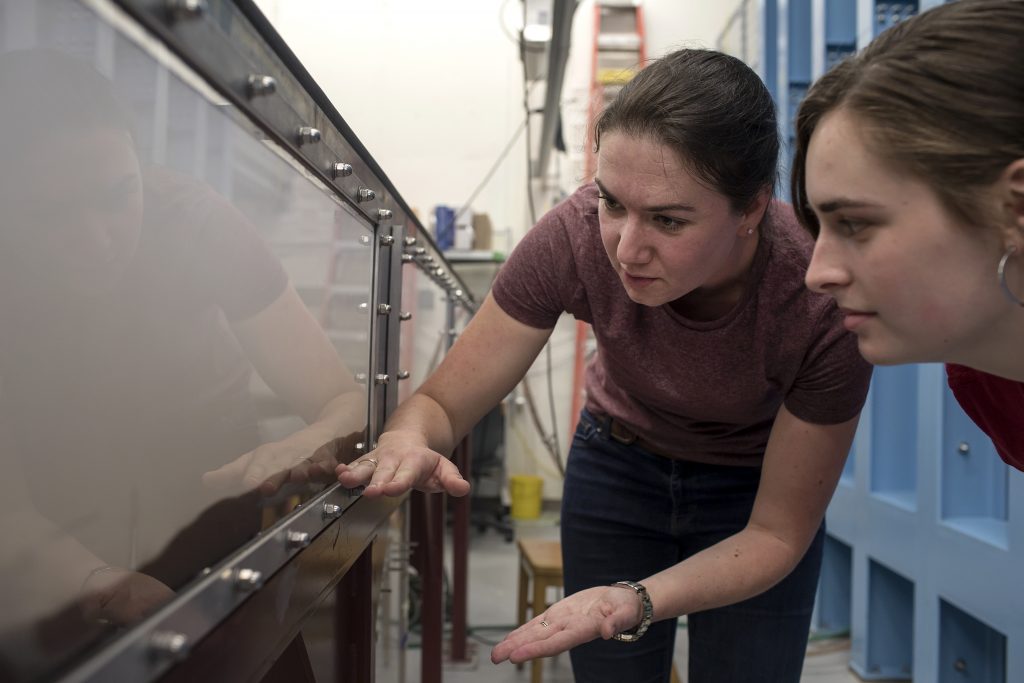
The CPES has expertise in air quality, asthma, climate change, energy, environmental health, sustainability and water quality; and in each of these areas, the team has built on its early projects to deepen its expertise and improve its engaged scholarship.
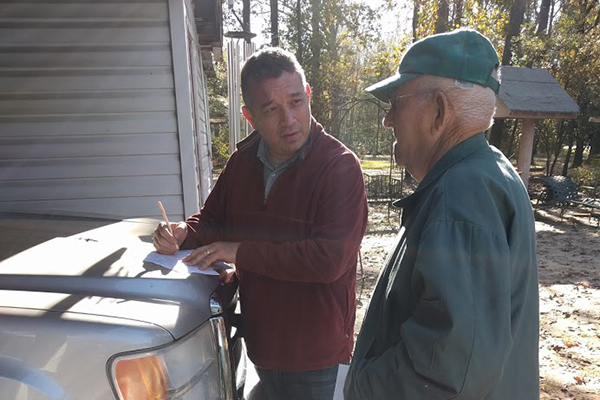
For example, when a community reached out to UNC for answers when they weren’t sure if their well water was safe, a pilot initiative, Well Empowered, was launched. Building on that work, CPES partnered with Virginia Tech on a National Science Foundation RAPID grant to study well-contamination in the aftermath of Hurricane Florence. Concurrently, Gray is conducting a research study on whether people understand their well test results, which will inform future efforts to communicate about the potential health hazards associated with polluted well water. At the same time, the Center has created a K-12 educator training program for communities that are dealing with arsenic in wells, which is helping to increase knowledge of how arsenic gets into wells, how it impacts human health, and options for removing it from drinking water.
“The Center’s broad expertise in public engagement, when combined with the scholarship of UNC’s environmental faculty, positions us to facilitate cross-campus collaboration and contribute to creative solutions to current environmental problems,” says Gray.
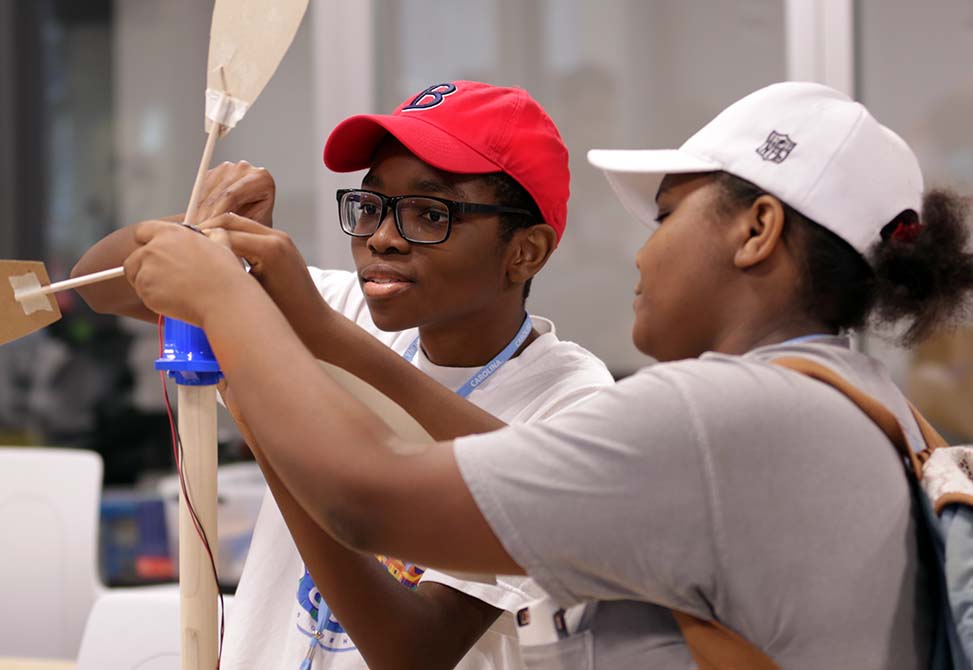
“A big part of what we’d like to do it strengthen connections that we already have and really find ways to connect with new faculty, which is in line with IE’s desire to bridge and connect all of the different units on campus that are doing environmental work.” Gray says.

